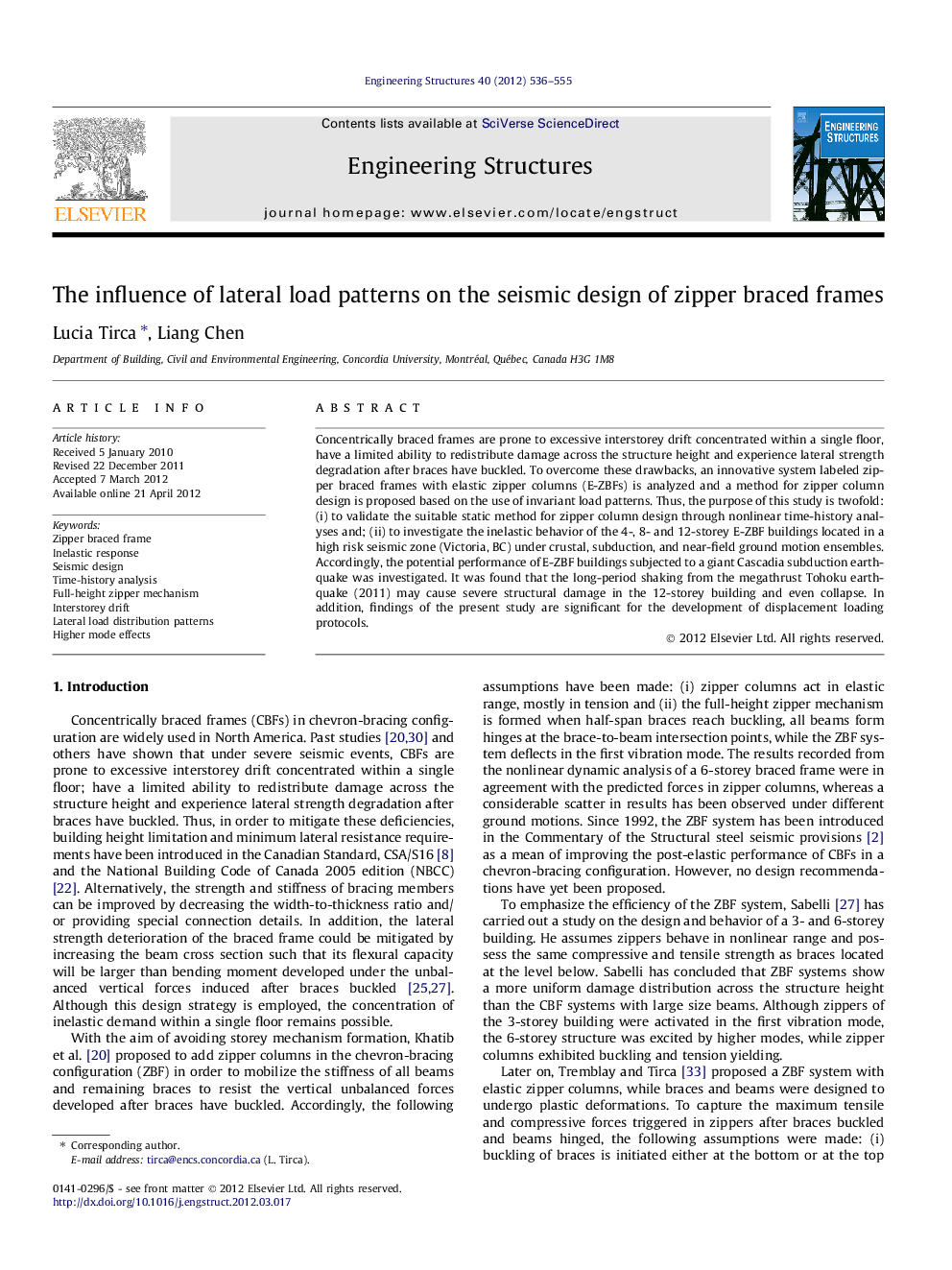| Article ID | Journal | Published Year | Pages | File Type |
|---|---|---|---|---|
| 267519 | Engineering Structures | 2012 | 20 Pages |
Concentrically braced frames are prone to excessive interstorey drift concentrated within a single floor, have a limited ability to redistribute damage across the structure height and experience lateral strength degradation after braces have buckled. To overcome these drawbacks, an innovative system labeled zipper braced frames with elastic zipper columns (E-ZBFs) is analyzed and a method for zipper column design is proposed based on the use of invariant load patterns. Thus, the purpose of this study is twofold: (i) to validate the suitable static method for zipper column design through nonlinear time-history analyses and; (ii) to investigate the inelastic behavior of the 4-, 8- and 12-storey E-ZBF buildings located in a high risk seismic zone (Victoria, BC) under crustal, subduction, and near-field ground motion ensembles. Accordingly, the potential performance of E-ZBF buildings subjected to a giant Cascadia subduction earthquake was investigated. It was found that the long-period shaking from the megathrust Tohoku earthquake (2011) may cause severe structural damage in the 12-storey building and even collapse. In addition, findings of the present study are significant for the development of displacement loading protocols.
► We model low-, mid- and high-rise zipper braced frame buildings in Western Canada. ► We study six lateral load distribution patterns for seismic design of zipper columns. ► We analyze seismic response of ZBFs under crustal, subduction, near-field records. ► We evaluate the effect of a potential Cascadia megathrust earthquake on ZBF system. ► We complete statistical distribution of damage using time-history analysis results.
